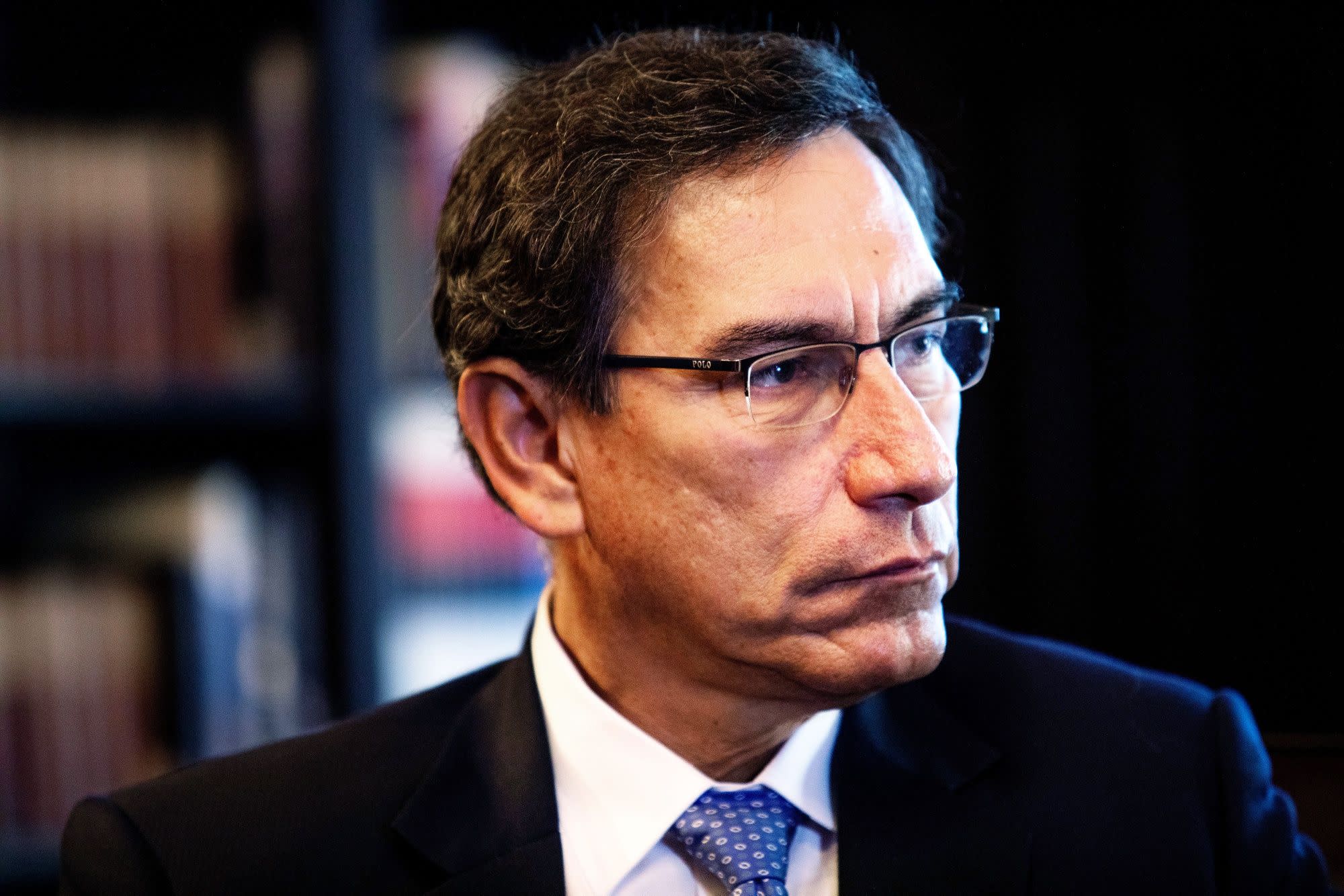
Japan’s Suga plans to keep Aso as deputy PM and finance minister
National Review
Bring Back the Bison
On October 11 last year, the World Wildlife Foundation tweeted a video of four bison being released into Badlands National Park. They spill from the trailer at the top of the hill and tumble down into the snowy expanse below, urged on by the ululations of the staffers above. If bison can look happy, these four do. They’d soon link up with the existing Badlands herd of almost 1,200 fellow bison; like cows, they are very social creatures.Typical WWF videos get 3 to 4 million views. This one received 15 million. The discrepancy is an encouraging sign for conservationists and bison lovers. Bison are the unlikely recipients of a grassroots affection typically reserved for the pandas, elephants, and tigers. But the online love for the creatures also points to a conundrum: How does one take all that love and channel it to save America’s national mammal?Though Teddy Roosevelt led a push to bring back bison in the early 1900s, for the last half-century the constituency for returning massive herds of bison to the Great Plains has largely been limited to the nonprofit world and Native Americans. Conservationist groups such as the WWF have expertise and money to burn: more than $2 million in the past five years. They work largely with indigenous groups, for whom bison can have spiritual, social, and economic value.But the political forces arrayed against rewilding are many, and they make reasonable points. In an age when buying a new home is still easiest in recently developed areas, why restrict land from being turned to profitable use? And no matter how financially successful small- or medium-scale butchering becomes, it will be difficult to compete with the cattle conglomerates that supply the nation’s supermarkets with cheap beef. Moreover, many proposals to repopulate national parks would require closing grazing land that is currently leased to private interests.Though bison lovers have struggled to build a durable coalition, they may have surprising new bedfellows. In corners of the online Right, in a form of meme-friendly esoteric politics, “megafauna nationalists” dream of rewilding the country. It is the strange synthesis, between megafauna nationalists and others, that will likely power any new, durable projects to repopulate the great American grassland.The Decline of Bison In 2016, Congress proclaimed the bison the national mammal. It was a ray of light for a creature that had teetered on the edge of extinction not long before. At their peak, up to 60 million bison roamed the continent. Though in the popular imagination bison are solely plains creatures, their range covered most of the continent. As a young surveyor in rural Virginia, George Washington shot and killed one. They inhabited taiga forests in Alaska, scrubby brushland in northern Mexico, and eastern woodlands in Boston. Hunting them in the 1800s was the contemporary equivalent of shooting fish in a barrel: Hunters reported looking out across the plains and being unable to see grass in any direction, so thick were the bison. Bison were systematically purged from the plains, both as a technique to control the Indians and to clear a way for the great railroads carrying the arriving “iron buffalo.” By 1883, only 1,000 bison still survived, the vast majority in small, private domestic herds. Today, there are about 11,000 bison on federal lands, with about double that number elsewhere in the country.Rewilding Indian Reservations A recent initiative by the Rosebud Sioux tribe in South Dakota offers one roadmap to bringing back the bison sustainably. The tribe recently announced that it aims to build a 1,500-head herd on 28,000 acres of tribal land by 2025. It would be the largest tribally managed herd on the continent, and the Rosebud Sioux expect that the project will be financially self-sustaining.As with any conservation project, the details will be key to success. The grassland on which the bison will roam is not ideal and will require maintenance, as will the miles of reinforced fencing. But in other ways, bison require less active care than an equivalent pasture herd does. They are hardy creatures. Compared with cows, their ratio of body mass to surface area is superior, meaning they keep warm far easier. The tribe anticipates butchering 250 to 300 head a year, funding the upkeep of the herd’s remainder.Behind Rosebud’s Wolakota Buffalo Range are two legacy institutions, the World Wildlife Fund and the Department of the Interior. WWF provided consulting and an assessment of the land. DOI (through their Bison Conservation Initiative) agreed to send roughly 200 bison a year to the range from the semi-free-range herd in Yellowstone. (The prospect of passing a semi full of lowing bison bulls on the highway should itself be enough to justify rewilding.) Wizipan Little Elk, head of the tribe’s economic development arm and formerly a DOI official under the Obama administration, spearheaded the partnership.Most tribal herds are small, maintained for cultural instruction and occasional local meat sales. Most industrial bison-farming operations maintain the creatures in conditions closer to those of well-fed cattle rather than of ranging wild creatures. If Rosebud can pull off its model, it will demonstrate that a fairly cash-poor entity can marry these two purposes, raising major quantities of a massive wild animal, mainly to have it around, while still remaining financially viable.Bison Fervor Some bison lovers dream bigger, though. If one spends enough time on Twitter (I out myself), specifically certain anonymous accounts on the right, one begins to find a particular love for megafauna. It doesn’t fit neatly into any one political project, except insofar as many of the images revolve around male acts of vigor. Most are tongue-in-cheek:> tired: looking to slot machines & other addictive modern activities for examples of how to drive user engagement> > wired: looking to our pre-agricultural ancestral environment for examples of how to drive user engagement pic.twitter.com/5uKKeFthHL> > — uncanny valley girl 🔪 (@leaacta) June 24, 2020Or they’re serious, but it’s hard to tell:Some pose as policy aphorisms:You can sense patterns, but also rifts: some talk of hunting sabretooth tigers in mecha suits, others renounce technology.> There’s something so magical and enchanting about the “antediluvian” aesthetic of the prehistoric world, a world untamed by God or man, full of titanic beasts, nature as primordial chaos. We need to bring it back. pic.twitter.com/Ny8TTe90aw> > — Michel 🔱 (@Michelesonn) May 30, 2020Perhaps the idea of rewilding megafauna is appealing as an Internet meme precisely because it feels so fantastic, divorced from reality. A world where this is possible is not a world in which it’s possible to tweet about it, is it?> Megafauna nationalism pic.twitter.com/Nn826w6iKk> > — stricture (@bog_beef) June 15, 2020Obviously, a large chunk of this is purely in jest. But the impulse to restore an America with great beasts is worth taking seriously. The memeing points to a deeper, visceral hunger for moonshot projects, for doing valuable tasks in a country that feels like it’s slowly winding down.Some will find the impulse to restore an antediluvian past inherently fascist. But the visceral argument for rewilding is much simpler to distill: megafauna are fundamentally cool. Partly, they’re captivating because of their staggering distance from us. Watch a buffalo as it breathes slowly. Its nostrils and tongue are grey and purple, and on each out-breath the grasses around its head tremble. This head is larger than your torso, and yet its forelegs are almost spindly, no more girthy than your forearms. The distribution of weight boggles the mind, as directly behind the head the spine juts up a foot or more, then slopes off at a steep angle to the haunches, like an old penny-farthing bike. When it decides to get up, it takes several long seconds: It has to rock back and forth, big black eyes bulging, to find the momentum to shrug that front weight forward onto its feet. One can stand quite close to a bison (in the wild, this is not recommended) without its acknowledging your presence. Its cognition, like that of all non-domesticated animals, is orthogonal to ours. As Thomas Nagel said about bats and Wittgenstein about lions, if bison could speak, we would not understand them.But they’re cool also because of their relations to us. This creature is a beast, and yet it can make eye contact with me, it reacts to my presence, and we share a world, a country, a space. In some ineffable way we are kin. One does not have to share the Sioux cosmology to experience this truth, or to think that a country in which these animals were a more regular part of our life would be a better place. If there’s one thing every American can agree on, it’s that, despite our efforts, we feel chained to our screens, rooted to our couches, and locked away from nature. Why not bring nature bellowing back? And not just any nature, but the heaviest land animal on the continent, a symbol of national greatness?And as NYT columnist Ross Douthat has pointed out, many of our well-intentioned attempts to remove caricatures of Native Americans from public life have had the secondary effect of diminishing their presence in “the American imaginarium.” Bringing back the bison, starting with comprehensive support for any Indian reservation that wanted it, would offer a chance to re-cement Native American iconography as a source of national pride. It would also begin in a small way to undo the suffering caused by the animal’s mass slaughter.Fixing Our Missing Bison Problem And perhaps one can dream even bigger. This country is massive, and a tremendous proportion of its Midwest and West are federal land. The Department of the Interior runs a Bison Conservation Initiative (the program through which Rosebud received starter bison), but it prioritizes tending to bison genetics and managing existing herds. It should be given the resources to pursue a vastly more vigorous policy.To sustain itself genetically, a bison herd needs at least 2,000 head, a number that few herds in the U.S. reach. There is ample room for herds far larger in Nevada, Kansas, eastern Colorado, western Nebraska, and the Little Missouri National Grasslands in North Dakota. Building room for them would require land swaps and purchases from private owners, as well as broader ecological initiatives to strengthen desertified ecosystems.To take just one example of a potential site: Cherry County in Nebraska has one resident per square mile. Land could easily be accumulated from willing sellers, many of whom are desperate to cash out on increasingly valueless property. Taken together, Kansas’s two least populated counties cover a million acres and are home to fewer than 3,000 residents. The possibilities are endless. Picture a national service program that actually entices young Americans: a year under the big sky of the American West as a modern cowboy (bisonboy?). Or intentional communities dedicated to service through wildlife preservation, centered in the small towns abutting the bison range.On the consumption side, we’ve seen enough misguided overhauls of the FDA’s nutritional pyramid. What about one that emphasizes lean, native-to-America meats? (Bison bolognese is easy and delicious.) FDPIR (Food Distribution Program to Indian Reservations) currently serves up mostly frozen and canned food, along with processed sugars especially ill-suited to the native genetic makeup, contributing to obscenely high rates of diabetes. We could fund starter herds explicitly for butchering, perhaps as a partnership between the DOI and the Food and Drug Administration.Bison Nationalism What one could call bison nationalism is only the latest installment in a long line of American attempts to massively reshape the biological landscape. In 1910, facing a national meat shortage and charged with the slightly crazed optimism of the time, Congress seriously considered a proposal to import hippopotami to the Louisiana bayou. During the ravages of the Dust Bowl, the federal government planted 220 million trees in an effort to keep soil tied down.Today, conservation efforts still have the potential to spark national pride. Abroad, Saharan African nations collaborate on a continental Great Green Wall to push back the desert. In England, the semi-feral New Forest ponies roam land held in common by local residents and are cared for special park rangers. The ponies are known as “architects of the forest” for their central role in maintaining and trimming plant life.Up to this point, I have not discussed the ecological benefits bison themselves provide, largely because we simply don’t know the long-term effects of reintroducing them on a large scale into their old landscape. We have no old herds to measure. But we do know the central role they play when embedded in an ecosystem. Bison were once a keystone species on the Great Plains. Their wallows numbered over 100 million and provided habitats for mountain plovers, prairie dogs, and other burrowing creatures. More species of songbird find a home in the mosaic landscape that bison create by foraging unevenly, unlike cattle that have monotonized grazing patterns. In death, wild bison provide scavenge for wolves, bears, and ravens, and eventually high-quality soil for the prairie.Their benefits aren’t limited to simple species conservation. Bison are such heavy grazers en masse that they turn back the biological clock for springtime plants, increasing plant productivity by up to 40 percent. In Siberia’s Pleistocene Park, researchers are attempting to bring megafauna back to maintain the steppe, which sequesters much more carbon than forests do. Roving herds of bison on the American steppe would foster more plant growth, which in turn would help cement carbon in the soil, creating humus (organic matter that forms the “foundation of soil fertility”), fostering more plant growth, supporting more grazing bison. It’s hard to picture a more virtuous cycle.Today, our Native American population faces interlocking crises of sickness, disease, and climate change. Nationally, the hollowing out of the Midwest contributes to a loss of shared history, a lack of opportunity for Zoomers and Millennials, and a sense of national slackness and dissolution. It may be that both the Rosebud Sioux tribe and the online dreamers share an insight most of us are missing: The mighty bison can help on every front. It’s time to bring them back.Editor’s note: This article has been amended slightly since its original publication, to correct the identity of Wizipan Little Elk.




